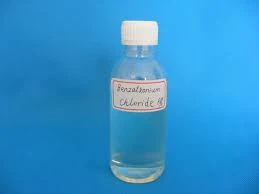diethylene triamine penta
Understanding Diethylene Triamine Penta (DTPA)
Diethylene Triamine Penta (DTPA), also known as diethylenetriaminepentaacetic acid, is a chelating agent that plays a significant role in various fields, including chemistry, medicine, and environmental science. Its unique molecular structure allows it to effectively bind metal ions, making it invaluable in various applications.
Understanding Diethylene Triamine Penta (DTPA)
In the environmental science sector, DTPA serves as a beneficial agent in the remediation of contaminated sites. Its ability to sequester and mobilize heavy metals allows for more efficient extraction and disposal of these toxic substances from soil and groundwater. This capability is crucial in cleaning up industrial sites and protecting ecosystems from further contamination.
diethylene triamine penta

Additionally, DTPA finds usage in agricultural practices. As a micronutrient chelator, it enhances the bioavailability of essential metals, such as iron, to plants, promoting healthier growth and improving crop yield. It is particularly beneficial in alkaline soils where metal ions are often less accessible to plants, thereby ensuring a more effective nutrient uptake.
Although DTPA is widely regarded for its benefits, it is essential to consider its environmental impact. As with many synthetic chemicals, concerns arise regarding its persistence and potential toxicity to aquatic life. Therefore, its usage is often regulated to minimize adverse ecological effects.
Overall, diethylene triamine penta (DTPA) exemplifies a multifunctional agent with diverse applications across several sectors. Its ability to chelate metal ions has made it a valuable tool in medicine, environmental remediation, and agriculture. However, as industries and researchers continue to explore its potential, it remains crucial to balance its benefits with sustainable practices to protect both human health and the environment.
-
Understanding Polycarboxylic Acids: Properties, Applications, and Future PotentialNewsJul.28,2025
-
Scale Inhibitor Explained: How to Protect Your System from Limescale and Hard Water DamageNewsJul.28,2025
-
Scale and Corrosion Inhibitors: Essential Chemicals for Industrial Water System ProtectionNewsJul.28,2025
-
Polyaspartic Acid: A Biodegradable Polymer for Sustainable ChemistryNewsJul.28,2025
-
Isothiazolinones: A Versatile Antimicrobial Class with Industrial Power and Regulatory ChallengesNewsJul.28,2025
-
A Deep Dive into 2-Phosphonobutane-1,2,4-Tricarboxylic Acid (PBTC)NewsJul.28,2025





